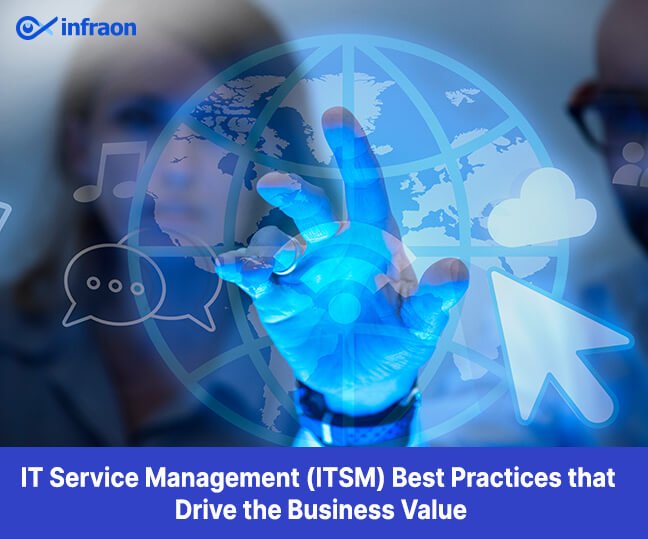As organizations grow and technologies advance, the need to keep track of an ever-expanding array of resources, from hardware and software to networks and personnel, has never been more critical. This is where a Configuration Management Database is a crucial tool for seamless asset management, offering a comprehensive solution to the complex challenge of maintaining an accurate and up-to-date record of an organization’s assets.
Related blog: ITSM vs. CMDB: What Are The Main Differences?
What is CMDB?

A Configuration Management Database is more than just a repository of asset information; it’s a dynamic and strategic resource that serves as the cornerstone of effective asset management. In essence, CMDBs can be understood as a digital manifestation of an organization’s entire infrastructure. It houses a treasure trove of data, encompassing details about hardware, software, applications, network devices, documentation, and even human resources.
This all-encompassing database acts as a single source of truth, providing a clear and real-time snapshot of an organization’s assets and their intricate interconnections.
However, the significance of a Configuration Management Database extends far beyond its role as a mere database. It’s a sophisticated solution that offers a holistic view of an organization’s assets, allowing for better decision-making, streamlined operations, and optimized resource allocation. By providing a centralized repository for asset information, it eliminates the chaos of scattered data sources and brings order to the complex web of interrelated assets.
Role of CMDB in asset management
In an era where businesses increasingly rely on technology, a CMDB’s role in asset management cannot be overstated. At its core, a Configuration Management Database serves as a strategic tool for tracking and managing an organization’s assets throughout its entire lifecycle. It goes beyond a static inventory list and dives deep into the intricacies of each asset, capturing vital information that ranges from configurations and relationships to dependencies and attributes.
Imagine a scenario where a critical software application experiences a performance issue. Without Configuration Management Database, the process of identifying the root cause could be a daunting and time-consuming task. However, with a well-structured CMDB in place, IT teams can quickly trace the application’s dependencies, pinpoint the underlying hardware and software components, and efficiently resolve the issue.
This level of insight not only speeds up problem resolution but also minimizes downtime, ensuring smooth business operations.
Relationship with software assets

Configuration details: Configuration Management Database meticulously documents software assets, capturing essential details like version numbers, patches, licenses, and installation dates. This comprehensive information creates a rich profile of each software component.
Dependencies and relationships: It establishes intricate connections between software assets and their dependencies. For instance, if an e-commerce platform relies on a specific database management system, the CMDB maps this relationship, highlighting the vital connection that ensures seamless functionality.
Change impact analysis: When a software update is planned, the Configuration Management Database’s records come to the fore. It provides insights into the software’s integration points and dependencies, enabling IT teams to assess the potential impact of changes. This analysis mitigates risks associated with updates that might inadvertently disrupt other systems.
Relationship with hardware assets
Physical attributes: Just as with software, the Configuration Management Database meticulously records hardware asset attributes such as processor type, memory capacity, and storage configuration. This level of detail is invaluable for resource allocation and capacity planning.

Hardware profiles: It creates profiles for each hardware asset, outlining its role within the infrastructure. This might include categorizing servers as web servers, database servers, or application servers, facilitating efficient resource allocation based on specific roles.
Dependency mapping: Much like software, hardware assets have dependencies too. A Configuration Management Database maps these relationships, illustrating how hardware components interact. For example, the CMDB can show that a web server is connected to a load balancer, which in turn connects to multiple application servers.
Lifecycle management: Configuration Management Database tracks the lifecycle of hardware assets from procurement to retirement. This includes monitoring maintenance schedules, warranty periods, and end-of-life dates, ensuring timely replacements and upgrades.
Tracing the Evolution of CMDB
The evolution of the CMDB concept is a fascinating journey that reflects the ever-changing landscape of technology and business needs. Originating from the realm of IT service management (ITSM), Configuration Management Databases have undergone a remarkable transformation to become versatile tools applicable to various domains and industries.
Initially, CMDBs were primarily focused on managing IT assets, such as servers, routers, and software applications. As technology advanced and organizations began embracing more complex and diverse asset types, the scope expanded accordingly. Today, a modern Configuration Management Database not only encompasses traditional IT assets but also includes a wide array of components, such as IoT devices, cloud services, virtual machines, and even personnel roles.
One of the notable advancements in configuration management technology is the integration of automation, artificial intelligence (AI), and machine learning (ML) capabilities. These innovations have elevated the CMDB from a passive repository to an active, intelligent system capable of automated discovery, predictive analytics, and anomaly detection.
This evolution empowers organizations to stay ahead of potential issues, make data-driven decisions, and ensure optimal asset performance.
Key milestones in CMDB evolution
1. IT-centric beginnings: The emergence of CMDBs within the ITSM landscape, initially tailored for managing IT assets like servers and software applications.
2. Inclusion of diverse assets: CMDBs expand to accommodate a wider range of assets, embracing virtual machines, cloud services, IoT devices, and more.
3. Automation takes center stage: Automated discovery mechanisms revolutionize data collection, populating the Configuration Management Database with accuracy and efficiency.
4. Intelligent insights with AI and ML: The integration of AI and ML empowers CMDBs to offer predictive analytics, anomaly detection, and data-driven decision-making.
5. Cross-disciplinary application: CMDBs transcend IT boundaries, finding utility in operations, finance, compliance, and security domains.
Features of Effective CMDB (with examples)

Comprehensive Data Collection
Imagine a large multinational corporation with an extensive IT infrastructure spanning multiple data centers worldwide. The company’s Configuration Management Database captures detailed data about each asset. For instance, when a new server is deployed, the records not only its physical specifications like CPU, memory, and storage capacity but also its network configurations, installed software, firmware versions, and even the specific rack and data center location.
Over time, as the server undergoes updates or changes, the Configuration Management Database continues to document these modifications, creating a comprehensive historical record. This detailed dataset enables the IT team to make well-informed decisions about capacity planning, hardware upgrades, and software updates, ensuring optimal performance and minimizing downtime.
Relationship Mapping
The Configuration Management Database here acts as a digital map of relationships. For example, when a student portal experiences a slowdown, the IT team can use the CMDB to trace the portal’s connection to a specific web server, which relies on a database server and the database server’s connection to a storage array.
By visualizing these dependencies, the team can quickly identify the root cause of the slowdown, whether it’s a database performance issue or a network bottleneck. This understanding allows for targeted troubleshooting and efficient problem resolution, minimizing disruption to students and faculty.
Change Management
When an upgrade is scheduled for a critical application, the Configuration Management Database plays a pivotal role. It documents the specific changes made to the application’s configuration, such as software versions, patches, and parameter adjustments. If the upgrade introduces unexpected issues, the CMDB’s historical data comes to the rescue.
IT personnel can review the changes made during the upgrade and revert to a previous configuration if needed, all while maintaining an auditable record of the process. This level of change management ensures stability and reduces the risk of disruptions.
Automated Discovery
With automated discovery, Configuration Management capabilities shine. When a new server is added to the network, automated discovery tools scan the network, identify the new asset, and populate the Configuration Management Database with essential information such as IP addresses, hardware details, and operating system versions.
This automation not only saves time but also reduces the chances of data entry errors that could lead to configuration inconsistencies. As the company continues to grow, the CMDB effortlessly keeps pace with the influx of new assets.
Integration Capabilities
For instance, when an employee submits an IT support ticket through the service desk software, the CMDB seamlessly integrates with the ticketing system. This integration allows the support team to access the employee’s asset information stored in the CMDB, such as their assigned laptop, software applications, and network permissions.
With this contextual information, the support team can provide more efficient and targeted assistance, reducing resolution times and enhancing user satisfaction.
Advantages of CMDB
The advantages of implementing a CMDB within an organization are manifold, and their impact reverberates across various facets of operations, efficiency, and decision-making.

1) Enhanced Visibility
Imagine a large financial institution with a sprawling IT infrastructure that includes data centers, servers, networks, and numerous software applications. Without a CMDB, tracking the relationships between various assets can be overwhelming. However, with a CMDB in place, stakeholders can effortlessly access a visual representation of the entire infrastructure.
For instance, they can quickly ascertain that a particular software application is hosted on a specific server, which in turn is connected to a particular network segment. This enhanced visibility allows them to understand the impact of potential changes and make informed decisions about upgrades or optimizations.
2) Improved Compliance
Consider a healthcare organization that must adhere to strict regulatory standards such as HIPAA (Health Insurance Portability and Accountability Act) to protect patient data. Ensuring compliance requires maintaining a secure and standardized IT environment. A CMDB can track all assets, configurations, and changes related to patient data systems, allowing the organization to easily demonstrate to auditors that its IT infrastructure meets the required compliance standards.
This record of asset attributes and configurations provides a clear audit trail, ensuring that the organization is consistently in line with regulatory requirements.
3) Efficient Problem Resolution
In a global e-commerce company, an unexpected outage occurs, impacting the checkout process on their website. Without a CMDB, diagnosing the issue could be time-consuming as IT teams scramble to identify the affected components. However, with a CMDB, the IT team can swiftly access the information that the checkout process depends on a specific database server, which in turn relies on a particular cloud service.
This knowledge expedites the troubleshooting process, allowing the team to address the root cause promptly, restore services, and minimize customer dissatisfaction.
4) Optimized Resource Allocation
Consider a manufacturing company with multiple production facilities. The IT department is responsible for managing various assets, including manufacturing equipment and associated software systems. With a CMDB, decision-makers can gain insights into how different assets interact within the production process.
They can see that a particular piece of equipment is linked to a software application responsible for quality control. By understanding these dependencies, the company can allocate IT resources to ensure that both the equipment and software are properly maintained, thus maximizing production efficiency.
5) Future Planning
A technology startup specializing in cloud-based services is experiencing rapid growth. As they plan for the future, a CMDB provides invaluable insights. For instance, the CMDB reveals that the current server infrastructure is nearing its capacity due to increased user demand. Armed with this information, the startup’s leadership can proactively plan for server upgrades and expansion to accommodate future growth.
Moreover, by analyzing performance trends and historical data stored in the CMDB, the company can strategize when to introduce new features or services based on user behavior patterns.
Related blog: Everything You Should Know About ITSM Metrics
Conclusion
In the dynamic landscape of modern business operations, where technology reigns supreme, efficient asset management is a non-negotiable requirement. A Configuration Management Database (CMDB) emerges as a paramount tool in this pursuit, offering a centralized repository for capturing, organizing, and analyzing asset data. With its ability to enhance visibility, streamline operations, and optimize resource allocation, a well-implemented CMDB becomes the backbone of successful asset management.
As technology continues to advance and organizations navigate increasingly complex IT environments, CMDBs are poised to evolve further. The integration of automation, artificial intelligence, and machine learning will further elevate the capabilities of CMDBs, enabling predictive insights, autonomous discovery, and real-time analytics.
Plus, as organizations embrace these innovations, CMDBs will continue to play a pivotal role in the ever-expanding realm of asset management and organizational efficiency. It’s evident that the journey of the CMDB has only just begun, and its future holds promises of even greater insights, efficiency, and value for businesses worldwide.


















